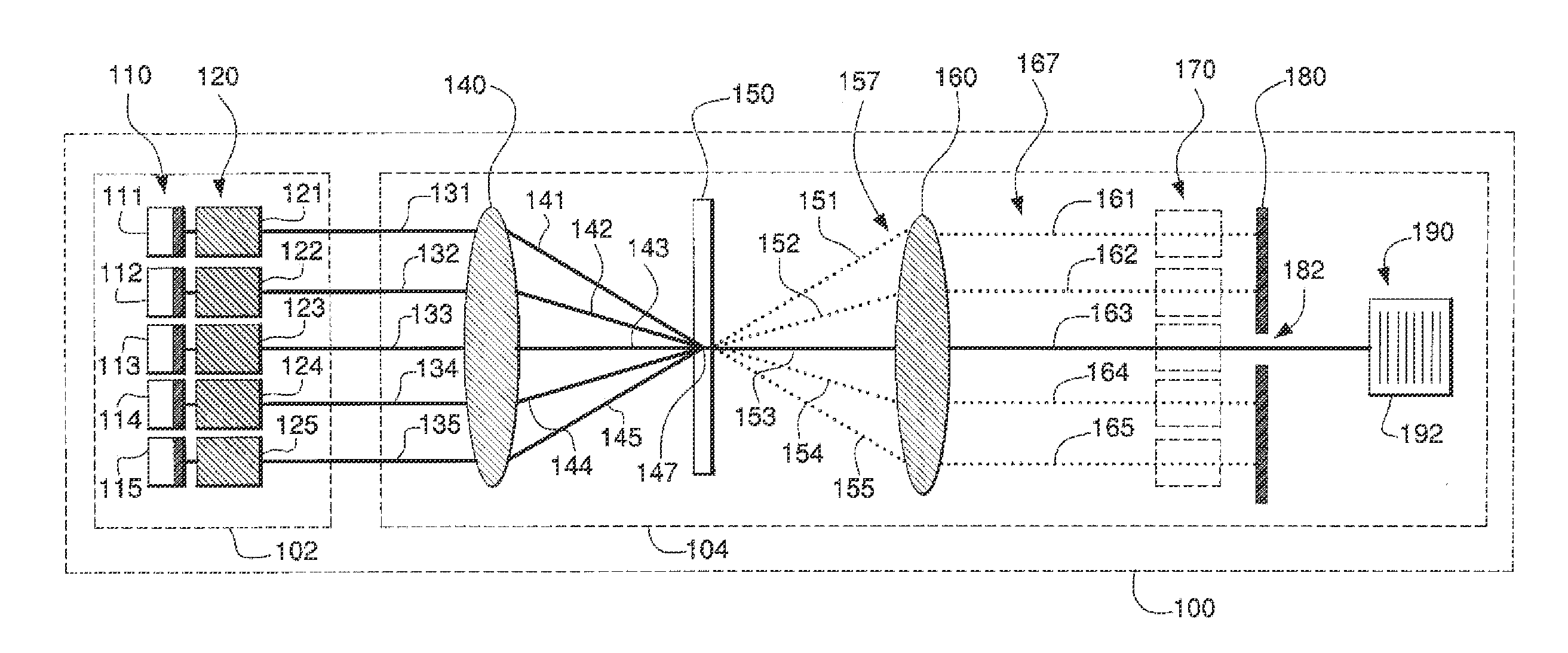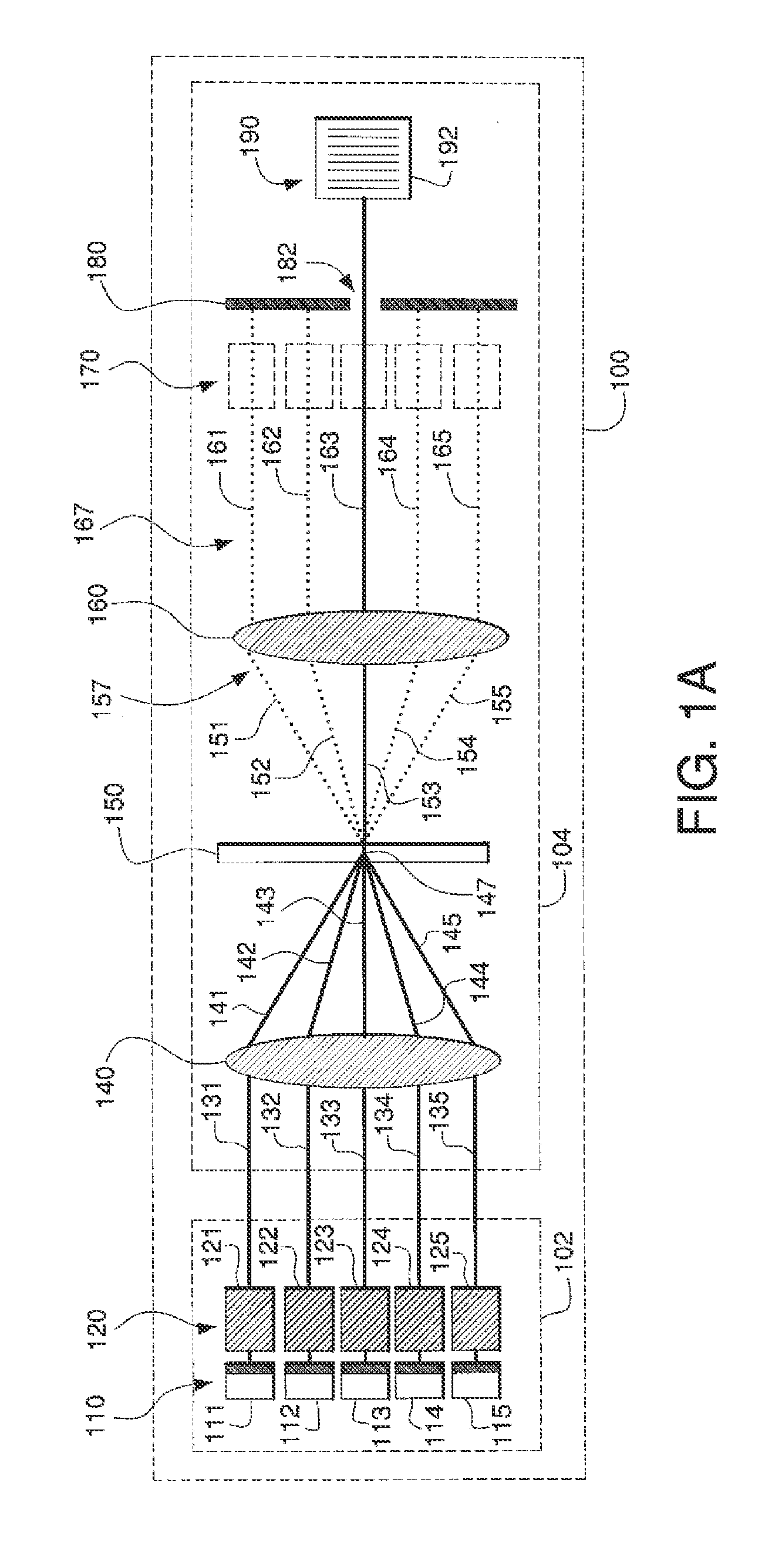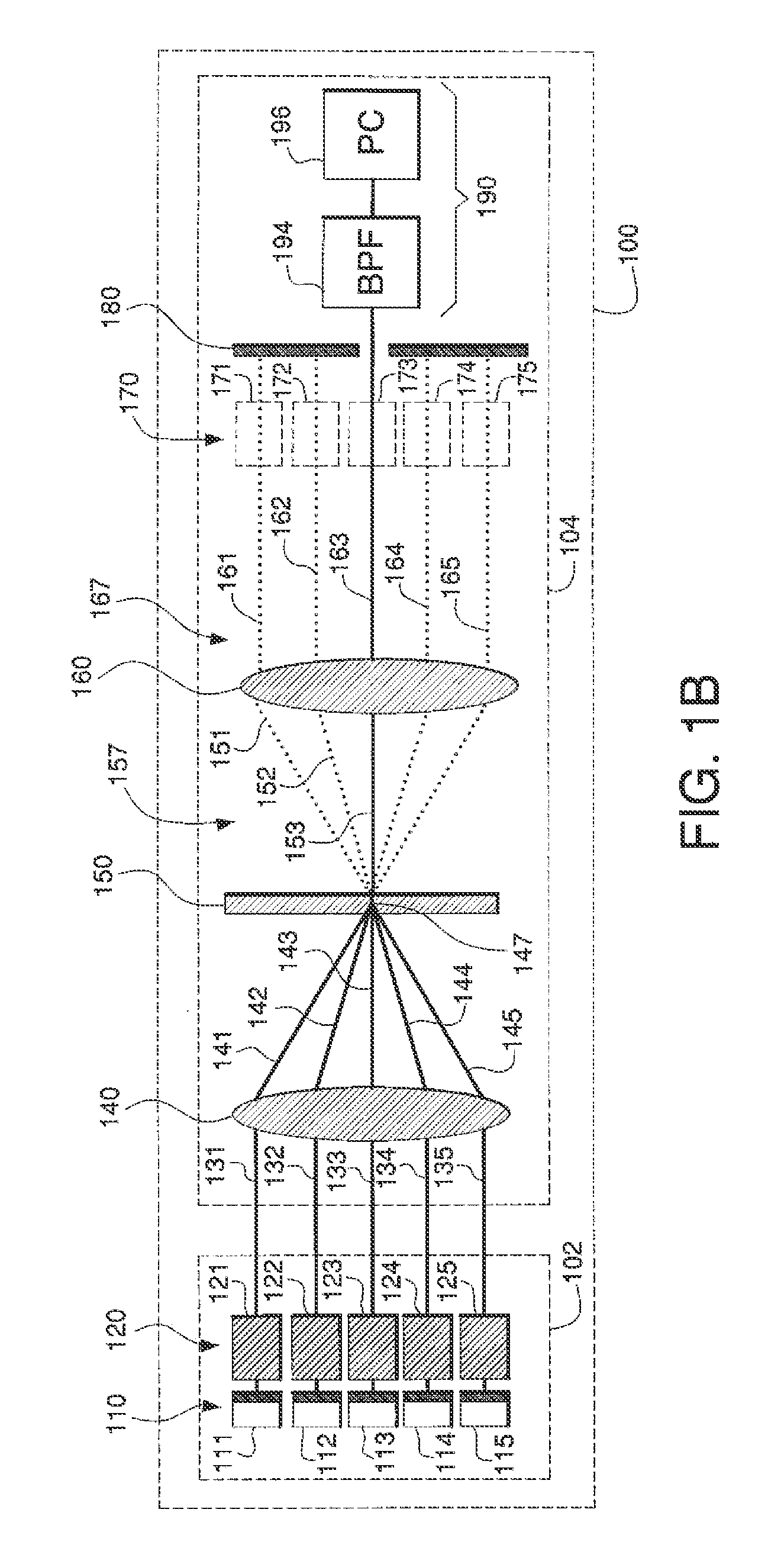High-power, phase-locked, laser arrays
a laser array and high-power technology, applied in the field of high-power, phase-locked, laser arrays, can solve the problems of optical gain, most difficult technological challenges, and increase the brightness of a single laser sour
- Summary
- Abstract
- Description
- Claims
- Application Information
AI Technical Summary
Benefits of technology
Problems solved by technology
Method used
Image
Examples
Embodiment Construction
[0025]FIGS. 1A and 1B depict example embodiments of systems and methods for achieving phase synchronization of multiple gain paths of a complex laser cavity. A composite resonator 100, as shown, may include an internal part 102, which may include those components that a typical laser cavity would have, and an external part 104, which may include additional components that enable phase synchronization of multiple gain paths in the laser cavity. The internal part 102 may include an array 120 of gain section resonators 121-125. Each gain section 121-125 may emit light, such as laser light, for example, along a respective optical path 131-135.
[0026]In order to achieve the best phase-locking (i.e., coherence) between the several gain sections 121-125, it may be desirable that coupling, preferably equally-strong coupling, is achieved between each emitter 121-125 in the array 120 and every other emitter 121-125 in the array 120. In order to construct a complete laser cavity with the indepe...
PUM
 Login to View More
Login to View More Abstract
Description
Claims
Application Information
 Login to View More
Login to View More - R&D
- Intellectual Property
- Life Sciences
- Materials
- Tech Scout
- Unparalleled Data Quality
- Higher Quality Content
- 60% Fewer Hallucinations
Browse by: Latest US Patents, China's latest patents, Technical Efficacy Thesaurus, Application Domain, Technology Topic, Popular Technical Reports.
© 2025 PatSnap. All rights reserved.Legal|Privacy policy|Modern Slavery Act Transparency Statement|Sitemap|About US| Contact US: help@patsnap.com



